
February 2005 Lawn & Garden Retailer Headlines
From OFA to YOU
America In Bloom, An OFA-Sponsored Program
By John R. Holmes, CAE
America in Bloom (AIB) is “planting pride in our communities,” and OFA is pleased to partner with the AIB organization to provide this intense, but friendly community contest. AIB encourages volunteerism and involves municipal governments, businesses, organizations and citizens in improving their community’s quality of life.
America in Bloom is a program for any community of any size in any area. It promotes nationwide beautification programs and both personal and community involvement through the use of flowers, plants, trees and other environmental and lifestyle enhancements. AIB brings together all community efforts that improve the quality of life to create a sense of unity. The contest is a forum of expression and a rallying point. All participants win by working together to beautify and improve their communities.
In 2004, nearly 35 communities from all regions of the country participated in the AIB contest. During the summer, professionally trained teams of judges traveled the country evaluating each community in eight criteria: community involvement, heritage preservation, environmental awareness, tidiness, floral displays, turf and groundcover areas, landscaped areas and urban forestry. Awards were presented at AIB’s annual symposium and awards ceremony in October 2004. The event was hosted by the city of Indianapolis, which won AIB’s 500,001-1,000,000 category in 2003.
America in Bloom debuted in 2001 as part of Canada’s successful Communities in Bloom (CIB) program. At that time, four U.S. cities partnered with four Canadian cities. CIB is modeled after similar programs in France, England and Ireland.
As a founding steward of America in Bloom and the administrator of the AIB contest, OFA is excited to be involved with these communities as they beautify their cities while encouraging community involvement, patriotism and civic pride.
For more information about America in Bloom, contact AIB at (614) 487-1117, [email protected] or www.americainbloom.org.
USDA To Halt Spread Of SOD
The U.S. Department of Agriculture’s Animal and Plant Health Inspection Service (APHIS) announced it is regulating the interstate movement of plants from commercial nurseries in California, Oregon and Washington to prevent the spread of Phytophthora ramorum, or sudden oak death (SOD), to non-infested areas of the United States.
Under the new federal order, California, Oregon and Washington nursery owners who ship P. ramorum host and associated host plants interstate must have their nursery stock inspected, sampled and tested by state officials before those plants can be transported across state lines. According to Nolan Lemon, APHIS spokesperson, “It will impact primarily woody and perennial growers in the states of California, Oregon and Washington. Because nursery stock is more seasonal, it will not be inspected with every shipment but at certain points of the season, and those inspections will be conducted by the respective division of plant industries or departments of agriculture in those states.” In addition, nurseries that ship non-host plants interstate must undergo a visual inspection to ensure those plants are not exhibiting P. ramorum symptoms before interstate shipment. This order went into effect on Jan. 10, 2005.
Currently, there are approximately 68 plant species that have been affected by this disease. The new measures address the discovery of the P. ramorum pathogen in commercial nurseries in Washington and in nurseries outside of the already-established quarantined areas in California and Oregon. This action also puts new restrictions on nurseries in the quarantined areas that ship non-host nursery stock interstate.
In April, APHIS restricted the interstate movement of several varieties of P. ramorum hosts and associated plants from California nurseries to prevent further spread of the disease, while California Department of Food and Agriculture and federal officials traced infected plants nationally.
P. ramorum was first seen in Mill Valley, Calif., on tanoak in 1995. The fungus is now known to exist in nature in 14 Northern California counties and in Curry County, Ore. Those counties are under a federal quarantine to prevent the movement of regulated and restricted articles.
H-2B Cap met for 2005
U.S. Citizenship and Immigration Services (USCIS) has, again, cut off the flow of foreign workers to service sector employers. In a January 4th press release, USCIS declared it had received enough H-2B guest worker petitions to meet the congressionally mandated cap of 66,000 workers, according to the American Nursery and Landscape Association (ANLA). The H-2B visa program permits employers to hire foreign workers to perform temporary nonagricultural work that is seasonal or intermittent.
Addressing what the USCIS action means to the green industry, ANLA director of legislative relations, John Meredith stated, “We expect an even larger number of landscape and landscape distribution businesses to be negatively impacted than when the program was shut down in March 2004. The fact the cap was hit earlier this year than last underscores the urgent need to find a permanent solution to the problem while comprehensive reform is being developed.”
ANLA is using its position as co-chair of the Essential Worker Immigration Coalition’s H-2B Subcommittee to reach out to program users in a variety of sectors in an effort to organize the advocacy effort that is seeking congressional relief from the cap.
That effort has already begun within the green industry. ANLA is partnering with the newly formed Professional Landcare Network (PLANET) to develop a common goal, message and coordination of grassroots activity that can serve as a model to the larger general business community.
“The H-2B program is vital to PLANET membership,” stated Tom Delaney, director of government affairs for PLANET. “As part of the biggest industry user of the program, the green industry needs leaders like ANLA and PLANET working together and with other effected industries to solve the economic hardship the program cap causes both employers and customers.” For more information or to help increase the amount of workers please contact John Meredith at ANLA at (202) 789-2900 or visit www.anla.org.
ANLA Releases Compliance Guidelines
Recently, the American Nursery & Landscape Association (ANLA) released a set of compliance guidelines to help its members and other industry businesses satisfy consumer product labeling regulations. Created by a joint ANLA and Society of American Florists (SAF) task force, the guidelines present recommendations for green-industry-specific solutions for meeting compliance requirements. The guidelines are available to the public online at www.anla.org.
The joint task force was formed earlier this year to research the implications of a weights and measures complaint lodged in Pennsylvania. The complaint addressed accurate reporting of container size. This complaint was made as several other weights and measures jurisdictions around the United States had already begun to examine the green industry for container labeling requirement compliance. ANLA, along with other industry associations including SAF, OFA, the North American Horticultural Supply Association and the Produce Marketing Association, met with regulatory advisers from the National Institute of Standards and Technology over the past year to understand the ramifications of this increased attention. That work has resulted in the creation of compliance guidelines.
ANLA has undertaken this work to provide its members the industry tools to comply with these regulations and avoid potential significant fines. ANLA and the other associations will serve as resources for their members and are available to provide additional guidance and clarity on how these regulations apply specifically to their businesses. For more information on all of the recent happenings about the current weights and measures situation see the January 2005 issue of Lawn & Garden Retailer for an article about the topic by ANLA’s Jonathan Bardzik.
Artificial Tree Recall Causes Uproar
In a recent issue of the NAPPO Pest Alert the USDA stated that there was a recall of artificial Christmas trees with wood trunks from China. According to the Alert “On Dec. 7, 2004, Michigan Department of Agriculture officials detected a quarantine significant pest, Callidiellum villosulum (Cerambycidae), in artificial Christmas trees made from wood trunks imported from China. The adult beetles were removed from the wooden portion of the artificial tree sold in a Michael’s Craft store. The product was traced back to the Polytree Company in China. Polytree was also involved with a recall in November on similar artificial trees sold at Ace Hardware. The infested artificial tree was 6 feet tall and packed in boxes marked with Polytree HK Co. Ltd. Numerous retail outlets have been identified as selling this product.” At this point, APHIS is working on further investigations and tracebacks to other Polytree shipments, as well as other manufacturers in China and Hong Kong, according to the Alert. Because of the recall, the following actions are being taken by APHIS as stated by the Alert:
- A recall was issued for all Polytree artificial Christmas trees with natural wood trunks from China.
- Emergency Action Notifications are to be issued to retail companies and importers to ensure that known infested material is moved out of commerce. The product can be incinerated or buried in a deep landfill.
- Investigations of other importers and distributors of any such trees with real wood trunks to verify compliance with the import requirements will continue.
- A request has been made to PPQ’s Center for Plant Health Science and Technology to provide a risk assessment within the next 60 days to determine the need for an interim rule to further restrict similar products made with real tree limbs and trunks.
APHIS is advising that you tell “consumers who find live insects to place them in plastic bags and freeze them. Insects intercepted should be turned over to the local Agricultural Cooperative Extension Service for identification. Information from the exterior boxes of the trees including barcodes and place and approximate date of purchase would also be helpful.”
Retail Hit Hard By December Sales
With the Christmas season over and retailers working hard to plan for the upcoming spring season, reports are coming in showing that the 2004 winter holiday season was not the most impressive compared to previous years.
According to an article from the Associated Press (AP), if it weren’t for the “surge of shopping just before and after Christmas” the 2004 Christmas season would have been a complete wreck. The article did state that “overall, merchants had an unimpressive performance, as some struggled to a disappointing finish.”
Within the last several weeks, companies have reported their December sales, and the majority of them were disappointed such as Sears, Roebuck and Co., Gap Inc., Pier 1 Imports Inc. and May Department Stores Co., according to the AP.
Even Wal-Mart Stores Inc., “which stepped up discounting after a slow start to the season, posted a decent but not outstanding 3-percent rise in same-store sales, or sales at stores open at least a year. That was slightly higher than Wall Street’s forecast,” said the AP.
It did end up being an OK year, but one of the major reasons is because stores had to discount heavily to get people to buy. Because of this discounting “retailers including Target and Pier 1 had to cut fourth-quarter earnings projections, according to Todd S. Slater, a retail analyst at Lazard Freres & Co.,” stated the AP.
“The holiday performance was weaker than the 4-percent gain posted in 2003, and in line with the holiday 2000 and 2001 seasons, which averaged a 2.3-percent gain,” stated the AP article.
One of the reasons that analysts were predicting a gain was due to the amount of increasing gift card sales, which are not recorded until they are redeemed. Another reason is the ever-increasing popularity of online sales. (“Online sales for the November and December period rose a better-than-expected 29 percent to $15.8 billion, according to comScore Networks Inc.,” the AP stated.)
According to the article, “The season had an uneven start at Thanksgiving, prompting many merchants to step up discounts, but consumers didn’t start shopping seriously until the week before Christmas. The surprise this season came the week after Christmas, when many stores saw a bigger-than-expected bump from the redemption of gift cards.”
PW Announces New Perennial Pot Design
Proven Winners (PW) and Proven Selections (PS) Perennials containers are now available in a new line of white with purple-imprint. PW and PS Perennials tags also have a purple edge to match the design. Traditional white containers with green imprint are available for PW and PS spring flowering varieties; these varieties are sold with the traditional green-edged tags that the industry has become very familiar with. “If it’s in a purple container, it’s a Proven Winners Perennial or a Proven Selections Perennial variety,” said Marshall Dirks, PW’s director of marketing and public relations.
“Retailers and consumers need a way to distinguish between our spring flowering and perennial varieties. Color is the easiest and most effective way to do that”, said Dirks.
Although consumers usually associate color with mood, it is the relationship between color and memory that will cause people to make the purple/perennial connection, said Dirks. “Consumers remember colors easily. Hence, our new PW and PS Perennials lines can be sold in a distinctive consumer package, where the coloring of the Á container matches the coloring of the tag. That’s also why we’ve designed our tags and containers so that the word ‘Perennials’ is part of the logo. PW and PS Perennials are extensions of the PW and PS brands, so the distinct color and logo are the first thing the customer will see.”
PW and PS Perennials containers are available in three sizes – 41?2, 1 quarts, and 1 gal. sizes. The 41?2 container uses PW’s revolutionary Self-Symetricize system; when used with automatic container dispensers, containers shift into place perfectly in the tray – without assistance – to align the logos and tag locator slots. The containers also list total volume capacity in metric and imperial measurements, and include PW’s name and address. They also have newly re-designed graphics that incorporate suggestions made by 500 garden center customers: images that are more distinct and a larger logo. The purple-edged PW and PW Perennials plant tags also clearly identify plants by variety name and list all patent information. Containers and trays are manufactured exclusively by Dillen Products, Inc.
To order container and trays or check prices online, growers can go to www.pwcertified.com. Information about PW and PS Perennials is available at www.provenwinners.com or by calling (877) 865-5818.
National Garden Month’s Program and Sponsors
The National Gardening Association (NGA) will present National Garden Month in April 2005 for the third consecutive year. This month-long action plan to increase gardening invites everyone to get out and plant. NGA hopes that educational activities, public events, government proclamations and garden center seminars will build a steady stream of increased awareness and participation from coast to coast and make National Garden Month 2005 as successful, if not more so, than the past two celebrations.
NGA introduces a new program to the nationwide celebration – Give a Garden, a nationwide campaign with a simple premise: There is someone in your community who will benefit by receiving a “garden” from you. From as small as a container of geraniums for an elderly neighbor or as big as planting a garden at a local public park, the opportunity for making a difference through gardening is endless. The call to action is going out to individuals, schools, garden centers and corporations everywhere.
Garden centers are encouraged to participate in National Garden Month 2005 via the Give a Garden program by following easy, step-by-step activities suggested by NGA. Look for the one-page “Give a Garden Suggestions for Garden Centers” instruction sheet available at www.garden.org.
Some of the recent sponsors of National Garden Month 2005 include Miracle-Gro Nursery Select, Hilton Garden Inn, Subaru Of America, Inc., Black & Decker and Proven Winners. In cooperation with these sponsors, NGA has chosen “Give A Garden – Add Beauty to Life” as this year’s theme for April 2005 National Garden Month.
Mexico Eyes U.S. Poinsettia Sales
Currently, the United States produces more poinsettias than any other country, making approximately $260 million each year in sales, according to an article in the Salt Lake Tribune. However, in Mexico, people have an extremely difficult time selling poinsettias in the United States because of restrictions on importing Mexican soil. This despite the fact that Mexico is the country that originally started growing poinsettias and named the plant in the early 1800s, according to the Salt Lake Tribune.
“It’s our plant, but now they have the patents and the name, too,” said Diana Esquivel, financial manager of Finaflor Nurseries in Cuernavaca, Mexico, in the article. “The ban has been around for decades. It probably Á dates from the early 20th century when modern quarantine laws went into effect. Meanwhile, poinsettia sales have been growing steadily in the United States: They rose from 56 million plants in 1992 to 68 million last year.”
At this point, the only poinsettias brought in from Mexico are the cuttings that are sent into the United States to be grown into finished plants by U.S. growers. According to the article, “A cutting costs about $.10 and a finished plant as much as $15 in the United States. A similar plant in Mexico sells for $2-5.”
“Officials at the Mexican Embassy in Washington have been lobbying the U.S. Department of Agriculture to allow importation of plants with artificial soil, either the vermiculite nuggets found in some potting soil or a substitute made of ground-up coconut shells. Both would be sterilized before being used for exports, said Enrique Lobo, head of agricultural affairs at the embassy,” reported the Salt Lake Tribune. However, at this point Mexico has a similar ban in place on imports of U.S. soil.
“Especially frustrating to Mexican growers is that Canada is allowed to export potted poinsettias to the United States. In 1997, the two countries began a joint certification program for greenhouses, making it easier for plants to move across the U.S.-Canadian border,” the article stated.
Monrovia Moves On
Fifty years after Monrovia moved its wholesale nursery operation from the city of Monrovia, Calif., to neighboring Azusa, it has sold a majority of the property and has begun moving propagation and plants to its other nurseries.
Ten years ago, anticipating an eventual move out of Azusa, Monrovia purchased a large parcel near Visalia, Calif., which is about 200 miles north of Azusa. This nursery has about 400 acres in production and with the closing of Azusa, will expand by 200-300 acres. The company’s Dayton, Ore., nursery (about 50 miles south of Portland) will expand by about 50 acres, and its La Grange, N.C., nursery by about 25 acres, growing some of the more cold-hardy crops.
Monrovia’s corporate headquarters will remain in Azusa. Three acres of gardens surrounding the office will remain as well. Part of the Azusa nursery included about 100 acres in the neighboring city of Glendora, Calif. For the time being, that parcel will be used for propagation of some large-volume crops. The tissue culture laboratory will be relocated to Oregon.
“We will still be growing the same volume of plants, and we see no change in our ability to deliver to our customers. About two-thirds of the plants we sell within California go to garden centers in Northern California, so the Visalia nursery is actually more convenient,” Dennis Connor, general manager noted.
The move affected 430 full-time craftsmen at the Azusa nursery. Each of those individuals was offered a transfer to any of the other locations, including an incentive and moving expenses. Understandably, some people cannot move due to family obligations, and they have been offered a generous severance package.
The sale of the 500-acre property was finalized in September 2004. Development of the site and grading operations are expected to begin in the first quarter of 2005. It has been approved for development of 1,250 homes, 50,000 sq.ft. of retail, street improvements, a new K-8 school, numerous parks, a community recreation center, a new fire station, a transit center for future Foothill expansion of the Metro Gold Line, and street and slope landscaping.
The move will occur in three phases: The first phase has begun, with the dismantling of buildings and equipment. This phase will be completed by April 1, 2005. Phase 2 will be completed by July 1, 2005, and the final phase, the propagation area, will be moved by December 1, 2005.




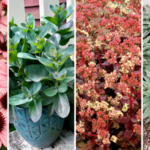

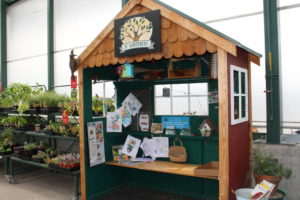

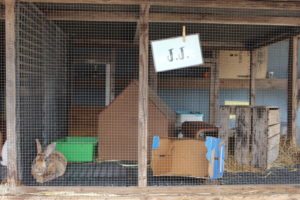



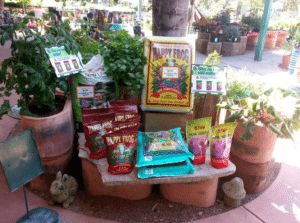
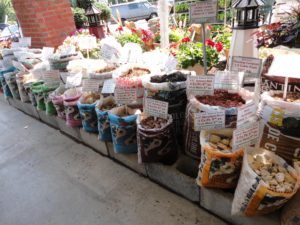
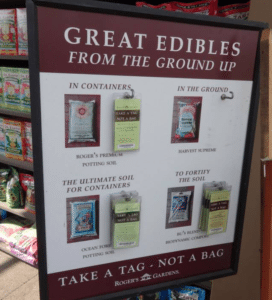
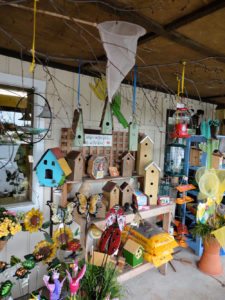
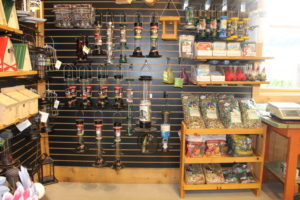
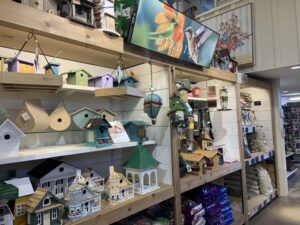
 Videos
Videos





